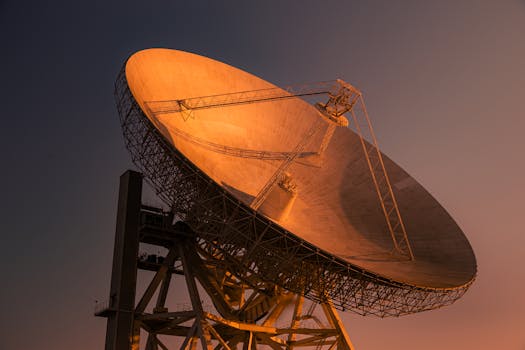Oneweb Eutelsat: A New Era in Satellite Communications

Oneweb Eutelsat: A New Era in Satellite Communications
Oneweb Eutelsat is a revolutionary new player in the satellite communications industry. The recent merger between Oneweb and Eutelsat is set to change the face of global connectivity, providing high-speed internet access to even the most remote and underserved communities. With a combined network of low Earth orbit satellites, the companies aim to bridge the digital divide and provide a new era of satellite communications.
The merger between Oneweb and Eutelsat brings together two industry leaders with a shared vision of providing global connectivity. Oneweb, founded in 2012, has been at the forefront of low Earth orbit satellite technology, with a network of over 600 satellites in orbit. Eutelsat, founded in 1977, is one of the world’s leading satellite operators, with a fleet of over 30 satellites in geostationary orbit. The combined entity will have a significant presence in the global satellite market, with a fleet of over 30 satellites in geostationary orbit and a network of low Earth orbit satellites.
History of Oneweb and Eutelsat
Oneweb was founded in 2012 by Greg Wyler, with the goal of providing global internet access through a network of low Earth orbit satellites. The company launched its first satellites in 2019 and has since expanded its network to include over 600 satellites in orbit. Oneweb has partnered with several major companies, including Airbus, Intellian, and Hughes Network Systems, to develop and launch its satellites.
Eutelsat, on the other hand, was founded in 1977 as a European telecommunications organization. The company has since grown to become one of the world’s leading satellite operators, with a fleet of over 30 satellites in geostationary orbit. Eutelsat has a long history of providing satellite communications services to governments, broadcasters, and telecom operators, and has played a significant role in the development of the global satellite industry.
Benefits of the Merger
The merger between Oneweb and Eutelsat is expected to bring several benefits to the satellite communications industry. The combined entity will have a significant presence in the global satellite market, with a fleet of over 30 satellites in geostationary orbit and a network of low Earth orbit satellites. This will enable the company to provide a range of services, including broadband internet, mobile connectivity, and broadcast services, to customers around the world.
The merger will also enable the company to take advantage of the strengths of both Oneweb and Eutelsat. Oneweb’s low Earth orbit satellites will provide high-speed internet access to remote and underserved communities, while Eutelsat’s geostationary satellites will provide broadcast and telecom services to customers in established markets. The combined entity will also have a significant advantage in terms of scale and resources, enabling it to compete more effectively with other major players in the satellite industry.
Challenges and Opportunities
The merger between Oneweb and Eutelsat is not without its challenges. The company will need to integrate the operations and networks of the two companies, which will require significant investment and resources. The company will also need to navigate the complex regulatory environment of the satellite industry, which can vary significantly from country to country.
Despite these challenges, the merger between Oneweb and Eutelsat presents several opportunities for the satellite communications industry. The combined entity will have the scale and resources to invest in new technologies and services, such as 5G and IoT, which will enable it to provide a range of new and innovative services to customers. The company will also have the opportunity to expand its presence in new markets, such as Africa and Asia, where there is a growing demand for satellite communications services.
Conclusion
In conclusion, the merger between Oneweb and Eutelsat is a significant development in the satellite communications industry. The combined entity will have a significant presence in the global satellite market, with a fleet of over 30 satellites in geostationary orbit and a network of low Earth orbit satellites. The company will be well-positioned to provide a range of services, including broadband internet, mobile connectivity, and broadcast services, to customers around the world. While there are challenges to be overcome, the merger presents several opportunities for the satellite communications industry, and is expected to play a significant role in shaping the future of global connectivity.



